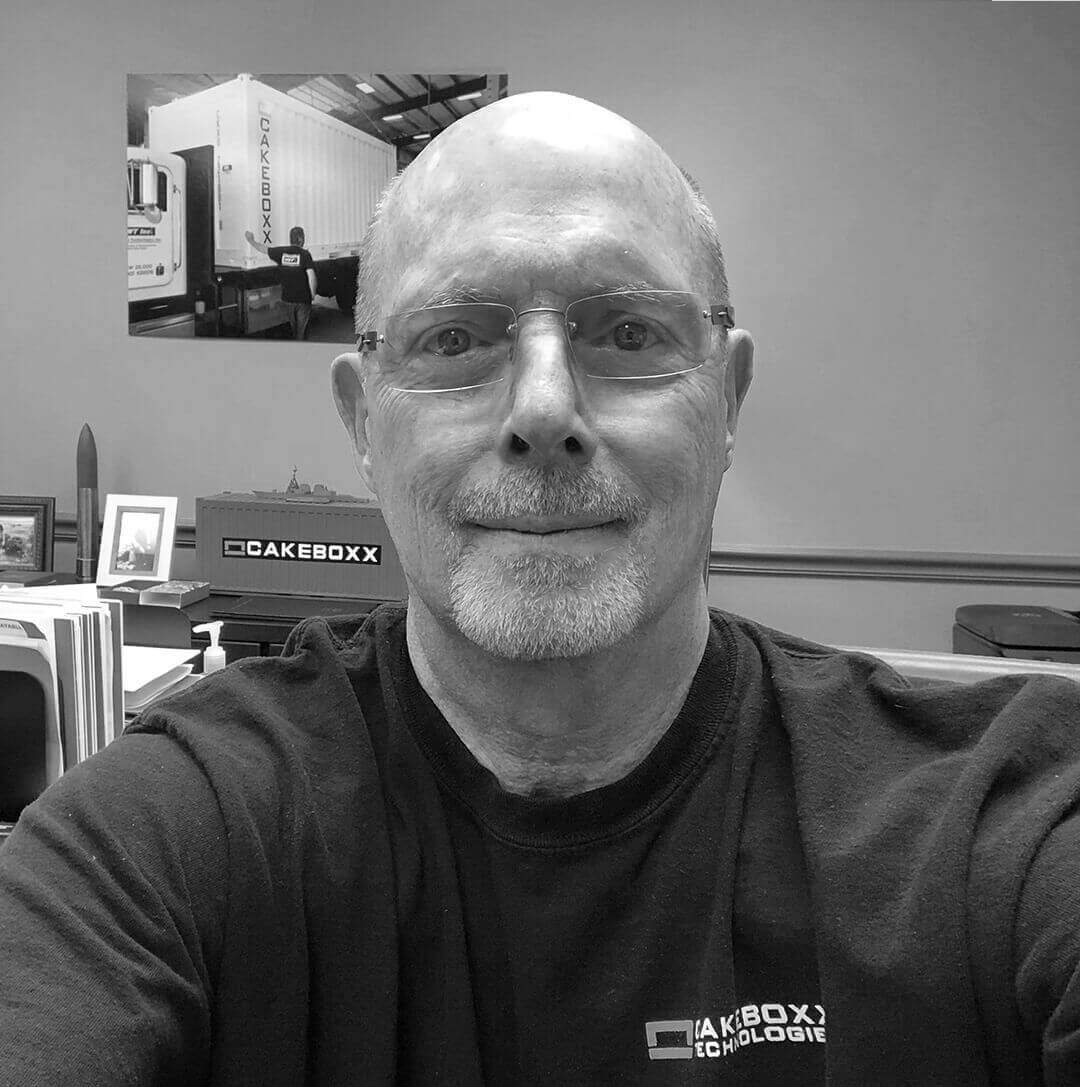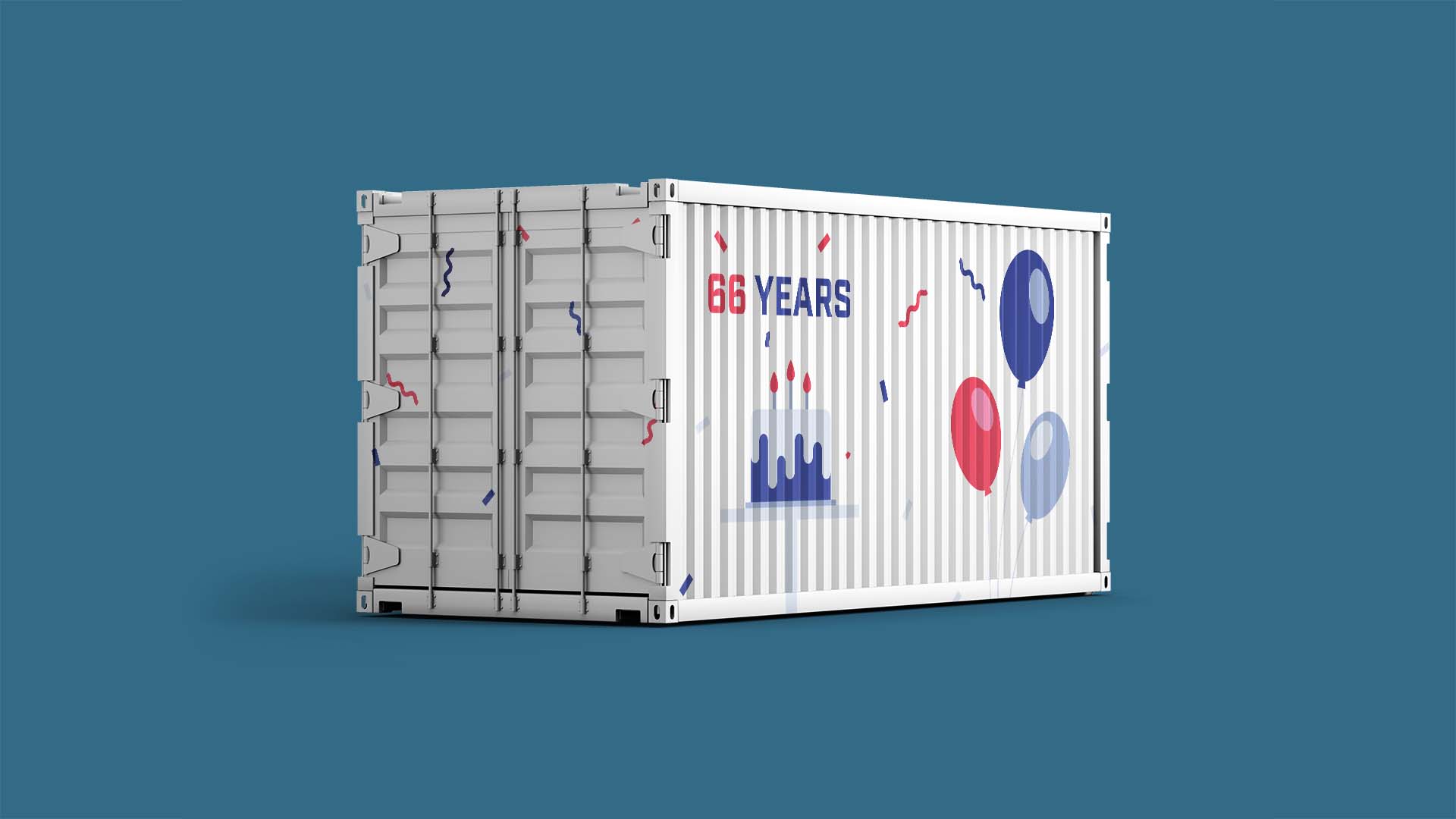The Future for Shipping Containers
On the 66th anniversary of container shipping, CakeBoxx Technologies Founder and CEO Daine Eisold explores the future for the iconic box.

Daine Eisold
Shipping Container Design
is Moving Into the Future
With each decade and new generation of technology, our world seems to move faster and faster – and businesses around the globe are in a never-ending race to keep up. To some this feels like a daunting task, but to others the challenge can be invigorating. This is especially true for those who work in industries that have “tried and true” practices which work to a certain degree but are ripe for reinvention in order to keep pace with the evolution of our global society.
The shipping industry is one such example, and, more specifically, the shipping container itself. As we approach the 66th anniversary of the first container ship’s maiden voyage on April 26th, we want to pay tribute to the revolutionary intermodal shipping container design and shipping process made possible by Malcolm McLean in 1956. Rather than looking back on the well-known origin story of the container, we want to spend some time looking ahead to the incredible innovations on the horizon that are poised to continue the evolution of the incredible shipping container.
Global Demand Leads to
Increased Innovation
We know shipping containers have not changed much in the past 66 years. Kudos to a fantastic design – there is comfort in the reliability and predictability this trusty partner brings. The ubiquitous 20ft and 40ft containers have been keeping the world turning for decades. The simple steel and plywood cube has been the global engine of growth, prosperity, and health for decades and will no doubt continue to deliver this outstanding record of service.
But, global demand has increased exponentially, and that timeless design is showing its age. It can’t keep pace with the speed, flexibility, and specialization requirements of some trade sectors, and predictably will be a less satisfying option to an increasing number of shippers. Functionally, it has been expertly and scientifically exploited by thieves, challenges employer’s operational safety and health concerns, creates vast environmental problems and most importantly, just isn’t very good at transporting so many new products with total global markets and destinations.
Of course, many people recognize these problems. It just happens to be one of those really tough problems to solve. Today’s container is ”too embedded” in trade and transportation processes. It’s too hard to change. So, what is being done? In recent decades it has been easier to work around the edges of container-centric challenges. Industry brains spend handsome amounts of time and treasure streamlining all the systems and machinery that operates with and around the container – to make those more manageable processes better. Vessels, cranes, terminal management systems, and handling equipment have evolved significantly – honing their ability to work with the largely unchanged container. And so, life goes on for the standard, old-reliable 20ft and 40ft long 8ft wide, 8’6” high steel drybox with the plywood floor.
Like all complex problems, there will be a tipping point where one or another aspect of our dependency on the standard container will precipitate a real shift in the product and processes around it. Maybe a global pandemic will upset the delicate balance of global supply chains, perhaps widespread hostilities, perhaps a meteorological event?
Of course, it is true that many forward-looking companies and inspired individuals are thinking of ways to implement meaningful change. Here are a few of the current initiatives ongoing to help the tired old boxes keep breathing and stay useful in today’s world:
Shipping and Beyond:
Taking Container Design Into the Next Century
Global intermodal trade is an eco-system of eco-systems. It is totally feasible, reasonable and practical to change some contributive processes along the way. But what is changed in a Singapore container yard may not work at Union Pacific’s ramp in Council Bluffs, Iowa or Walmart’s distribution center in Lancaster, Texas. Short of an epiphany, lets concede it will be an incremental journey to make meaningful CO2 footprint-impacting process and equipment changes on the road to sustainability.
But let’s not underestimate epiphanies. There is so much potential for innovation that can streamline this journey, enabling the creation of more efficient and more distributed warehouse operations centers with smaller footprints and new ways to move cargo in and out of centers quickly and into the hands of businesses and consumers. The crystal ball at CakeBoxx envisions high-speed, high-productivity drive-through distribution centers, where cargo unloading and loading happens “live”, enabled by 360-degree container unloading/loading and autonomous vehicle unloading. When the access to cargo isn’t limited to doors in the back of a container, a host of newer, faster, more efficient processes are enabled, minimizing truck idle time, and literally keeping supply chains moving forward.
This is the type of eco-system introspection is happening here at CakeBoxx and at hundreds of like-minded organizations around the world. Let’s call it ”practical innovation” – ideas that develop in the minds of experienced operators with vision and understanding. The CakeBoxx team looks forward to sharing ideas and our vision with you.
Please give us a call anytime to discuss your ideas.




